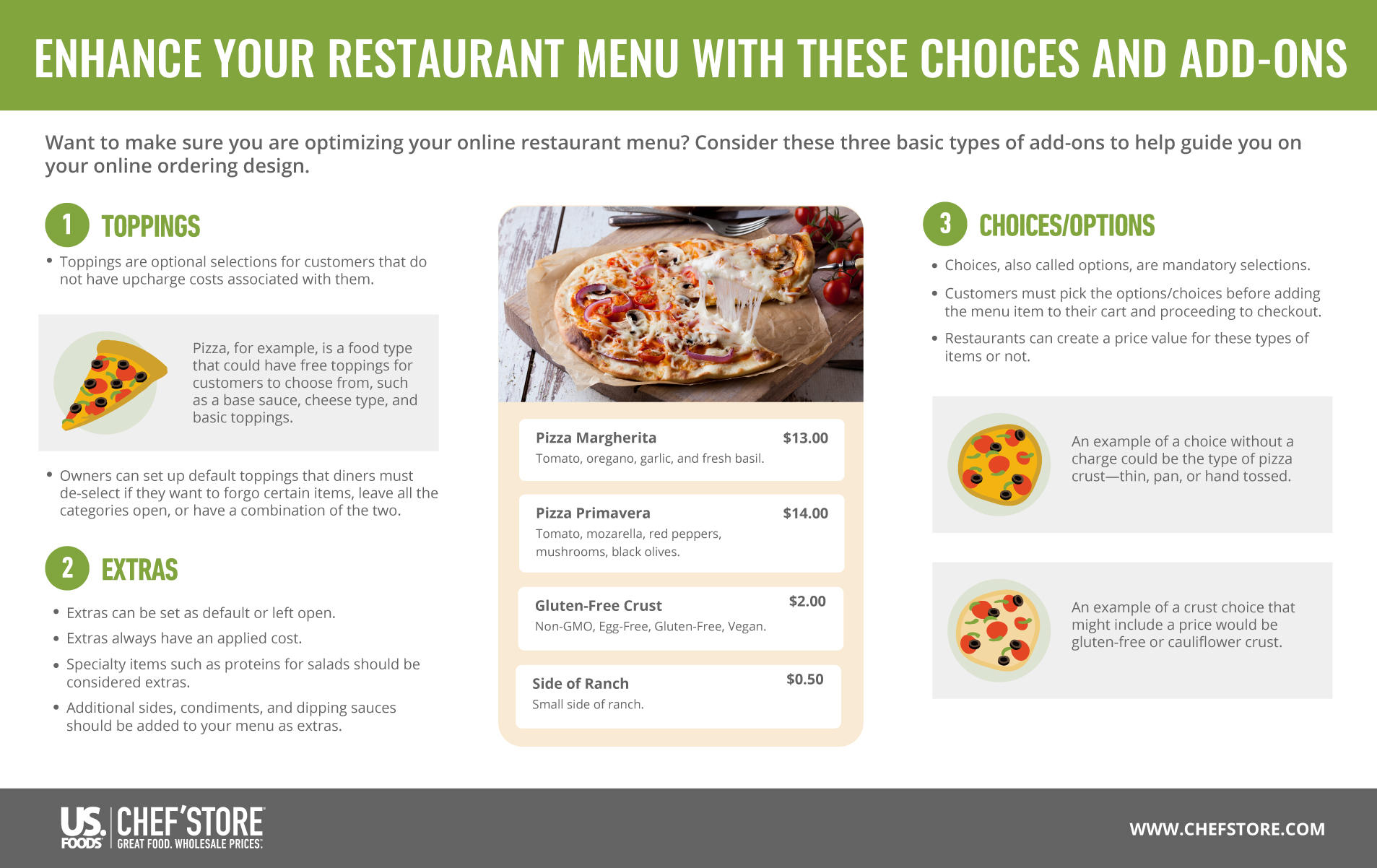February 23, 2023

Menu items on their own represent a composed dish. Add-ons, however, are a list of items that guests can add to their order in addition to offered dishes. What makes add-ons customer-pleasing and potentially profitable is that they are stand-alone and not necessarily created for a specific menu item. For example, a Southern-inspired establishment might offer a macaroni and cheese side add-on that customers can select as part of their sandwich order, brisket plate, or just on its own.
Types of Menu Add-Ons
The way restaurants choose to handle menu add-ons can vary. In the above example, owners might include the price of the add-on in the menu price. They can also charge for the side. Thinking about add-on items in three main categories can help you decide how to structure your menu options:
- Toppings: optional add-ons that do not have an assigned price value.
- Extras: optional choices that have an additional cost associated.
- Options/choices: mandatory selections that may or may not have upcharges.
How you treat your add-ons depends on what makes the most sense for your menu pricing structure.
How Add-Ons Improve Menu Profitability
Add-ons are an excellent way to provide more ordering options, allow customers to create more customized meals, and can promote higher ticket sales.
Customization: 80 percent of restaurant customers want personalization in their dining experience. Offering add-ons can give consumers the kind of customization they are looking for. This, in turn, can encourage repeat business.
Maximizing Food Costs: With food costs rising, restaurants are streamlining their online menus to reduce food waste and maximize profits. One of the beauties of add-ons is they allow operations to create smaller menus while still making the most of limited ingredients. For example, your grilled chicken breast entree can be offered as an add-on for other menu items such as salads and wraps.
Promotes Higher Ticket Sales: A study from HubSpot revealed that 72 percent of sales personnel who upsell and 74 percent that cross-sell report a 30 percent increase in overall revenue. Restaurants are no strangers to up-selling and cross-selling. Dine-in establishments are always utilizing these techniques to boost ticket sales. A server might offer coffee and dessert after clearing dinner plates, or a bartender may ask if a guest would like a premium spirit instead of a well.
With online ordering, restaurant operators have to let the interface do the work of a server since the order takes place in one transaction. That’s why it’s essential to structure your online menu to maximize add-on accessibility and visibility.
How to Incorporate Add-Ons on Your Online Restaurant Menu
There are a few key steps you can take to enhance your online menu and set it up for add-on success:
- Create an easy-to-use website and online ordering platform.
- Show all the items you offer on your online menu.
- Strategically place add-ons throughout the ordering process—for example, fries for sandwiches, bacon for burgers, and salmon for salads.
- Break items into three categories—toppings, extras, and choices—and include add-ons menu items where it makes the most sense.
Save on Exceptional Ingredients at US Foods CHEF’STORE
CHEF’STORE offers premium products at competitive price points. Our expansive selection will help you manage food costs and delight your customers. Visit one of our many nearby locations to take advantage of great prices and stellar ingredients.
Want to take your restaurant to the next level? Then check out our business resources.
Enhance your restaurant menu with these choices and add-ons
